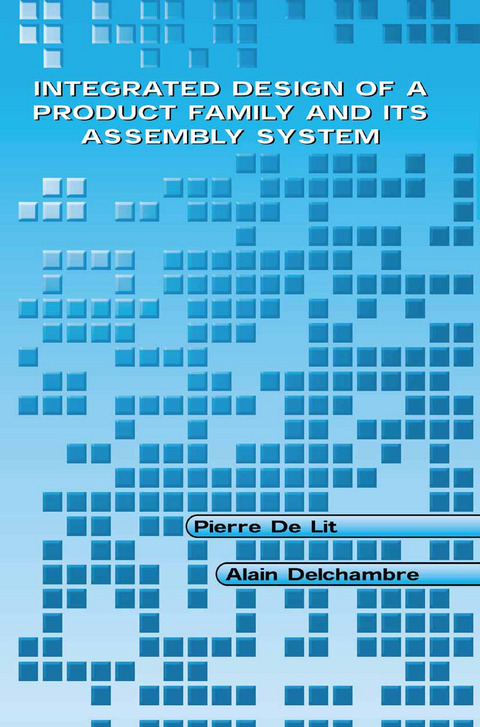
Integrated Design of a Product Family and Its Assembly System
Kluwer Academic Publishers (Verlag)
9781402074370 (ISBN)
Integrated Design of a Product Family and Its Assembly System is an important, must-have book for researchers and Ph.D. students in Computer-Integrated Manufacturing, Mechanical Engineering, and Manufacturing, as well as practitioners in the Design, Planning and Production departments in the manufacturing industry. Integrated Design of a Product Family and Its Assembly System is also suitable for use as a textbook in courses such as Computer-Aided Design, Concurrent Engineering, Design for Assembly, Process Planning, and Integrated Design.
1. Introduction.- 1 Assembly.- 2 Assembly lines.- 3 Product and assembly line design.- 4 Scope of the book.- 5 One typical case study.- 6 Disposition.- 2. State of the Art.- 1 PF and assembly line design.- 2 PF representation.- 3 Design for assembly.- 4 AP representations.- 5 Assembly planning.- 6 Line design.- 3. PF And Assembly Line Design Methodology.- 1 Concurrent engineering and assembly.- 2 Concurrent design and “optimisation” problems.- 3 Proposed design philosophy for PFS and assembly lines.- 4 Conclusions.- 4. Description of Product Families.- 1 Proposed PF structure representation.- 2 Illustrative case study.- 3 Conclusions.- 5. PF Structuring and Preliminary DFA.- 1 Objectives of the DFA.- 2 Proposed structuring and preliminary DFA issues.- 3 Case study.- 4 Conclusions.- 6. Representation of APs for PFs.- 1 Proposed AP representation.- 2 Examples.- 3 Conclusions.- 7. Preliminary Assembly Planning.- 1 Hypotheses on the APS.- 2 Proposed preliminary AP tool.- 3 Case study.- 4 Conclusions.- 8. Detailed DFA and AP.- 1 A detailed DFA principle for PFS: standardisation.- 2 Joining process and assembly method selection.- 3 Detailed AP of the FEns.- 4 Equipment preselection.- 5 Case study.- 6 Conclusions.- 9. Line Layout.- 1 Line decomposition.- 2 Determination of the conveying system.- 3 Logical layout.- 4 Differences between logical and physical layout.- 5 Case study.- 6 Conclusions.- 10. Conclusions and Further Work.- 1 Summary of the results and discussion.- 2 Further research.- Appendices.- Appendix A Precedence operators.- 2 Operator ?.- Appendix B The PROMETHEE II method.- Appendix C Glossary.- References.
| Erscheint lt. Verlag | 30.6.2003 |
|---|---|
| Zusatzinfo | XI, 281 p. |
| Sprache | englisch |
| Maße | 155 x 235 mm |
| Themenwelt | Naturwissenschaften ► Chemie ► Technische Chemie |
| Technik ► Maschinenbau | |
| ISBN-13 | 9781402074370 / 9781402074370 |
| Zustand | Neuware |
| Informationen gemäß Produktsicherheitsverordnung (GPSR) | |
| Haben Sie eine Frage zum Produkt? |
aus dem Bereich


